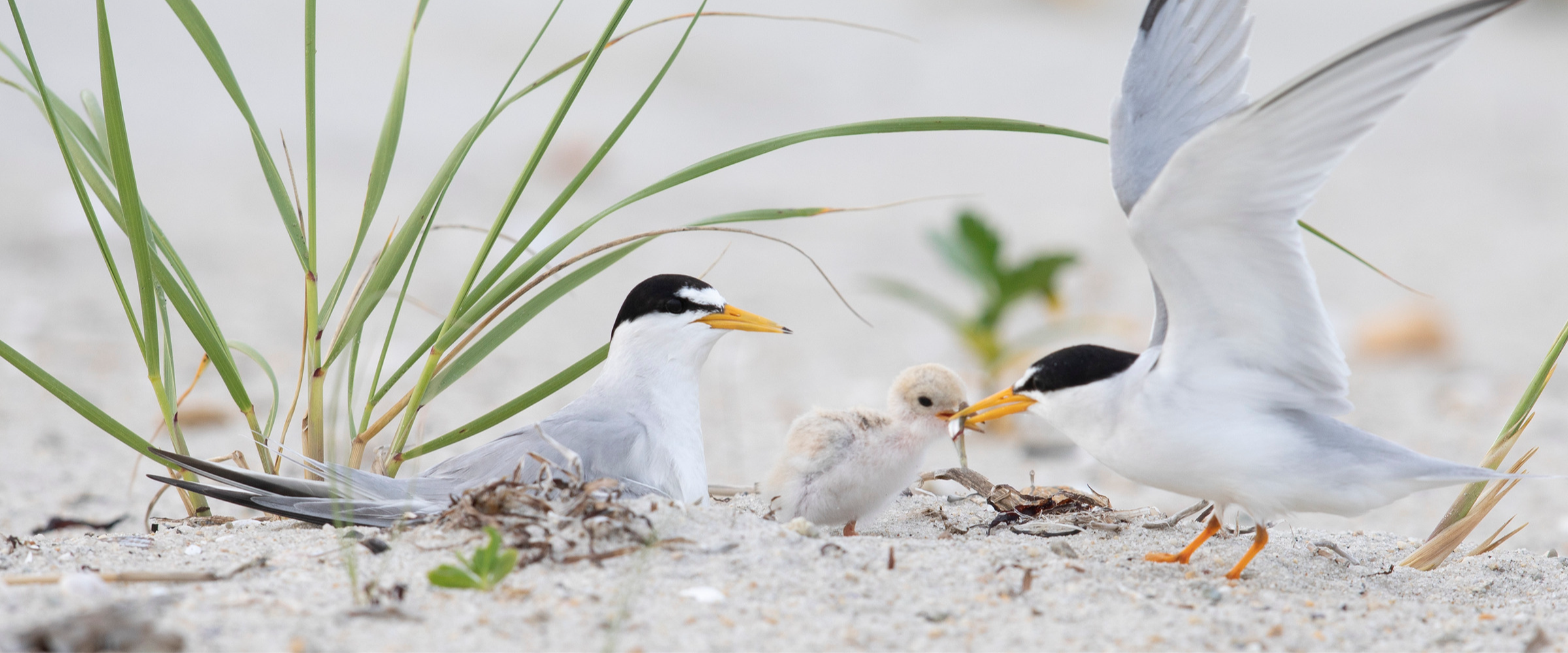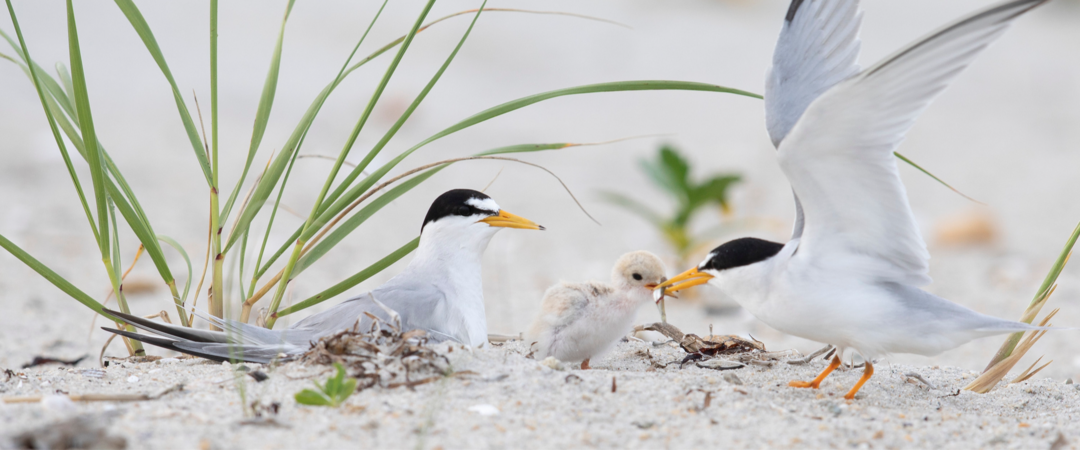New York’s beaches are fun places for summer day trips, but for many of our beach-nesting birds, they also serve as a giant nursery! From May through August, chicks of a variety of species—including the beloved Piping Plover—grow up on our shorelines, learning how to find food, fly, and avoid the many dangers they face on the beach.
Audubon staff and volunteers work hard throughout the spring and summer to give these birds the best chance at survival by setting up fencing around nesting sites, exclosing nests to protect them from predators, and educating beachgoers on how to #SharetheShore with beach-nesting birds. For endangered and threatened species like the Piping Plover, these actions can mean the difference between a successfully fledged nest, and a failed one.
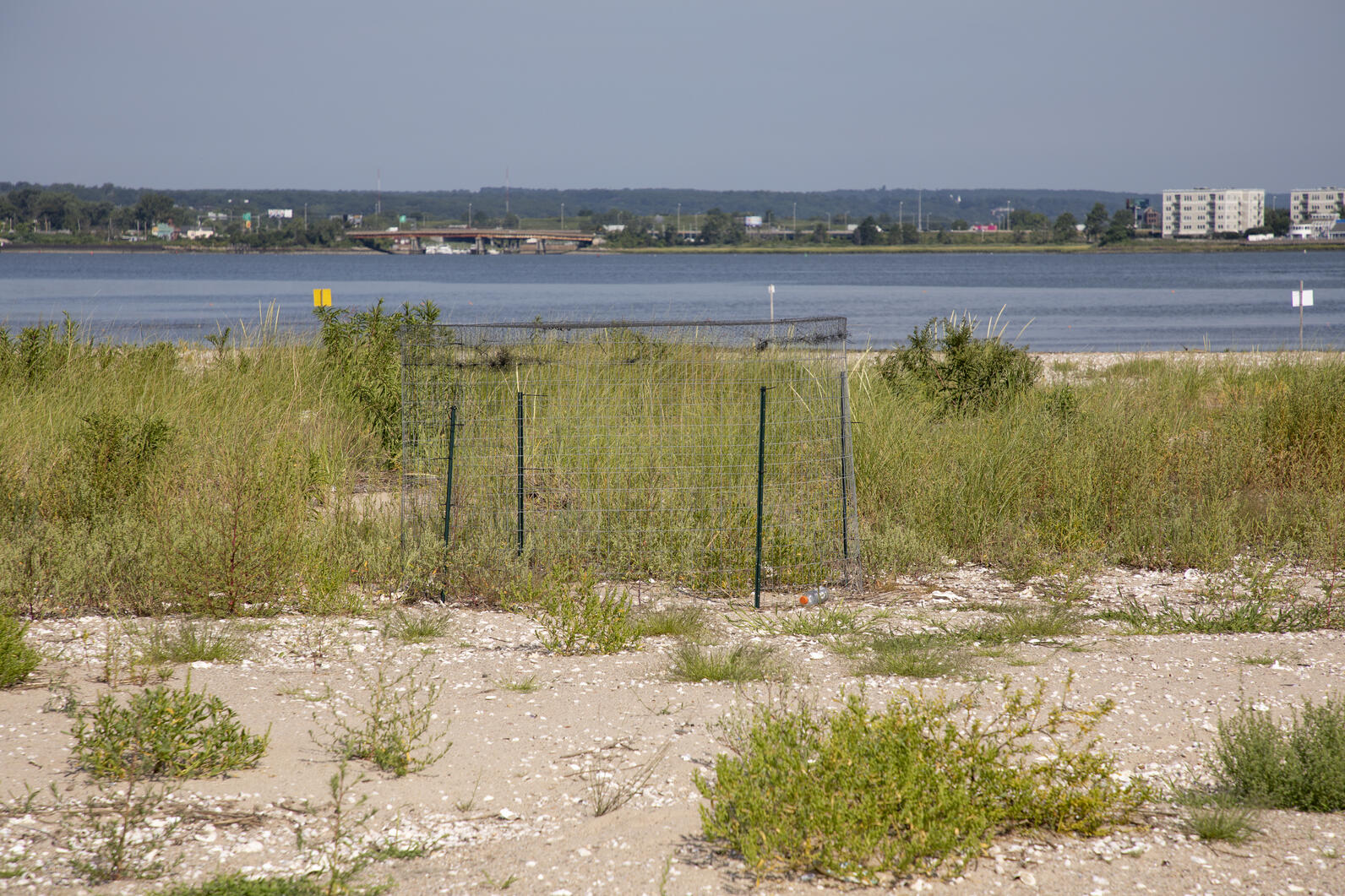
We can all do a small part to help keep these birds safe this season. Read on to learn more about these birds, and what actions you can take to keep them safe!
Please note: All photos included in this article were taken according to ethical standards that ensure photographers were not disturbing the birds, including staying far enough away, minimizing time spent near the birds, and being mindful of how and where photos are shared, if they are shared at all. Click here for more information on how to ethically photograph shorebirds and shorebird chicks.
Piping Plovers
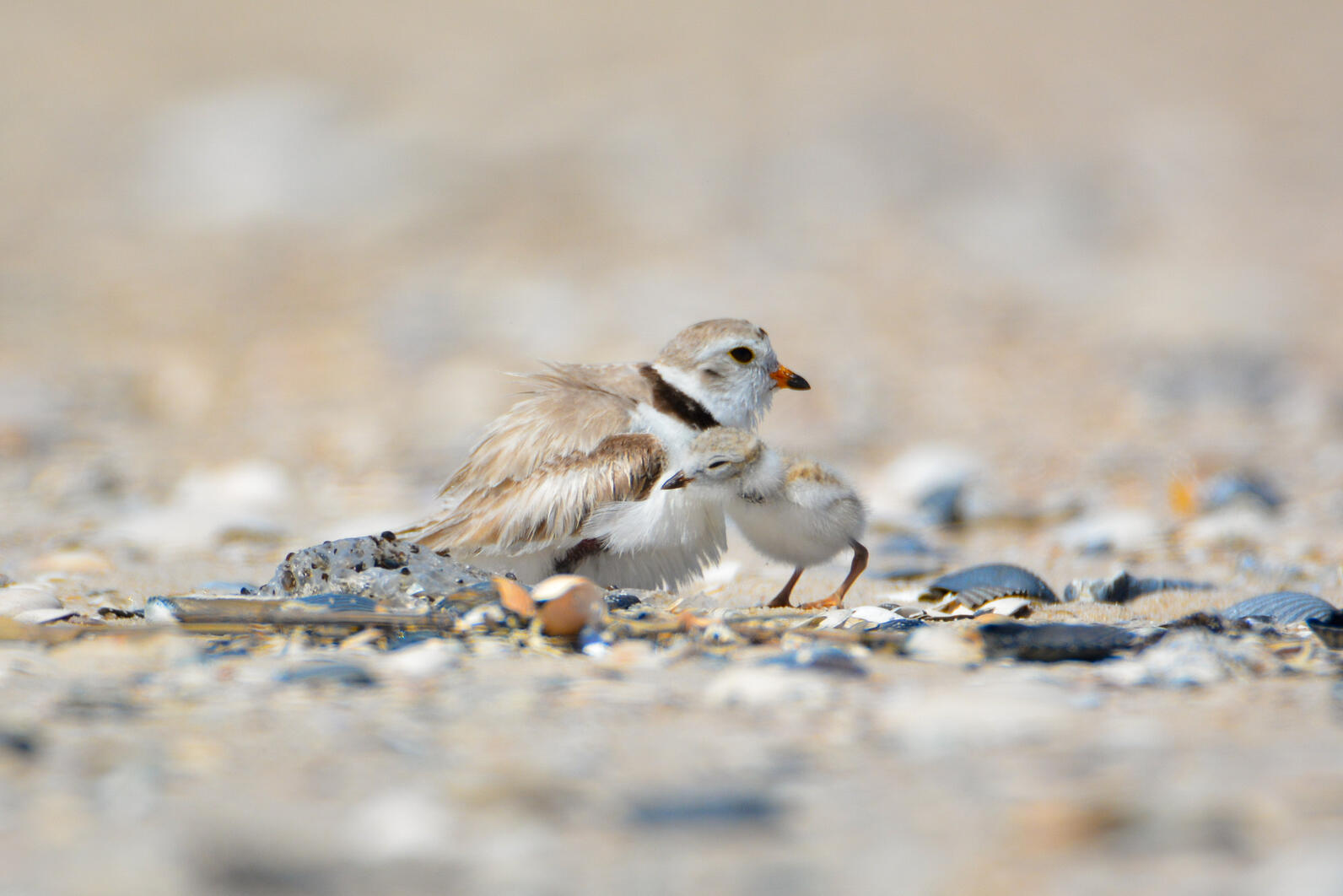
- How do they hatch? Piping Plovers hatch covered in fluffy down and ready to walk and feed themselves within a few hours, though still under the watchful eyes of their parents. Upon hatching, they only weigh around 6 grams. This is about the weight of a postcard. Within a week, they can double in size!
- What do they eat? Like adults, Piping Plover chicks forage at the edges of the water. A perfect meal for these birds might include marine worms, spiders, insects, and small crustaceans.
- Where are they? Piping Plovers are hatched ready to roam the beach, and roam they do! You can spot these chicks foraging along the edge of the water, or resting on the beach, sometimes hidden by grasses or other cover.
- When can they fly? Piping Plover chicks are able to fly within three to five weeks of hatching. In the fall, they’ll join other Piping Plovers on their migration south.
- Fun fact! Camouflage is one of their greatest tools for staying safe before they can fly! Their speckled, sand-colored feathers allow them to stay hidden from people and predators alike.
American Oystercatchers
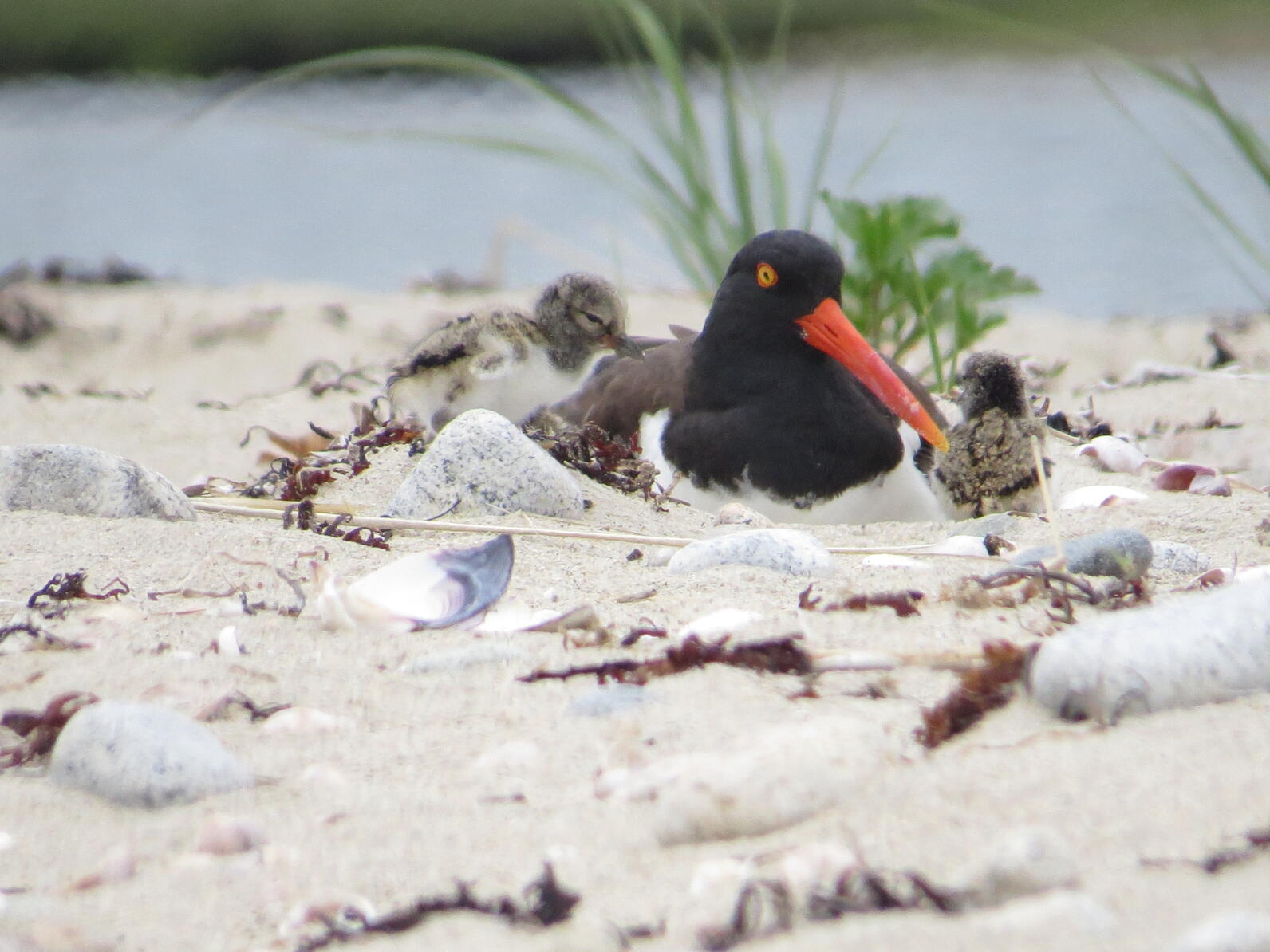
- How do they hatch? American Oystercatchers hatch covered in fluffy down feathers that help them camouflage with the sand. They are able to walk and leave the nest shortly after hatching. They weigh around 37 grams at the time of hatching—just over an ounce, or about as much as a AA battery!
- What do they eat? Though they leave the nest shortly after hatching, they still rely on their parents to feed them for the first two months of their lives. Many chicks will begin foraging on their own before the two-month mark. Chicks eat shellfish, marine worms, and other food found in the near the edge of the water.
- Where are they? In the early weeks of their life, American Oystercatcher chicks spend much of their time hiding, but as they grow older they will follow their parents to the water and around the beach.
- When can they fly? It only takes five weeks for an American Oystercatcher to be able to fly.
- Fun fact! You can tell young Oystercatchers apart from their parents by the color of their beak! Adults have fully red-orange beaks, but young Oystercatchers have partially black beaks.
Least Terns
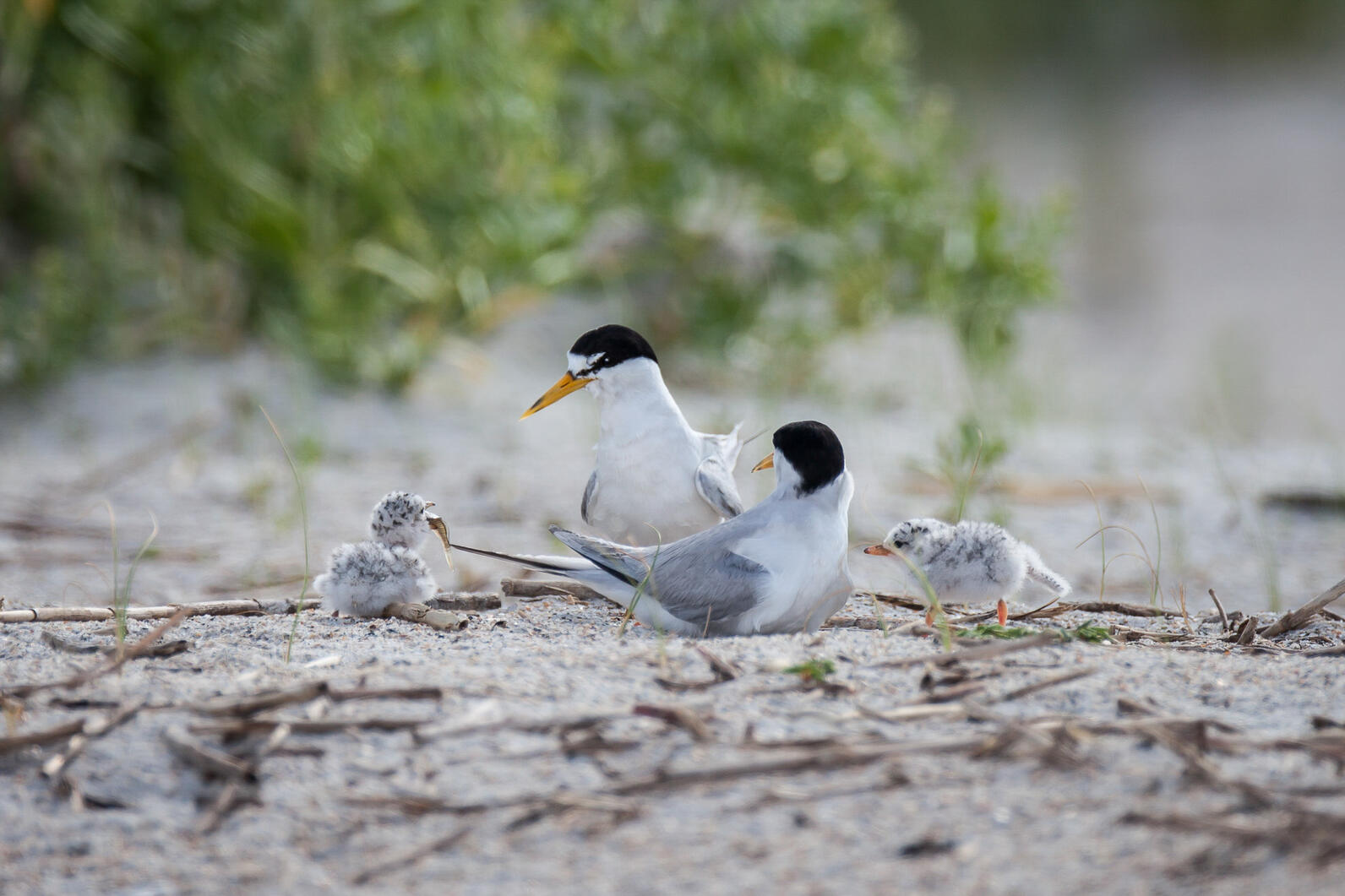
- How do they hatch? Least Tern chicks hatch covered in fluffy, sand-colored down, but they do not leave the nest until a few days after hatching. Adult Least Terns only weigh around one to two ounces, so, upon hatching, these chicks weigh only a fraction of that—less than a single CD!
- What do they eat? Even after leaving the nest, they rely on their parents for food. Tern parents will bring back small fish, crustaceans, and insects to feed their young from where they forage in the water.
- Where are they? Least Tern chicks spend much of their time in hiding. They will move about the beach as they wait for their parents to return with food, sometimes seeking shelter from the sun under plants or other forms of shelter.
- When can they fly? Least Tern chicks can take their first flight at around 3 weeks of hatching. Even so, they may continue to stay with their parents for as many as 3 months after they begin flying!
- Fun fact! In some places Least Terns nest, shelter can be hard to come by. To help protect chicks from the sun, heat, and predators, conservationists may put up small wooden “tents”.
Keeping Chicks Safe
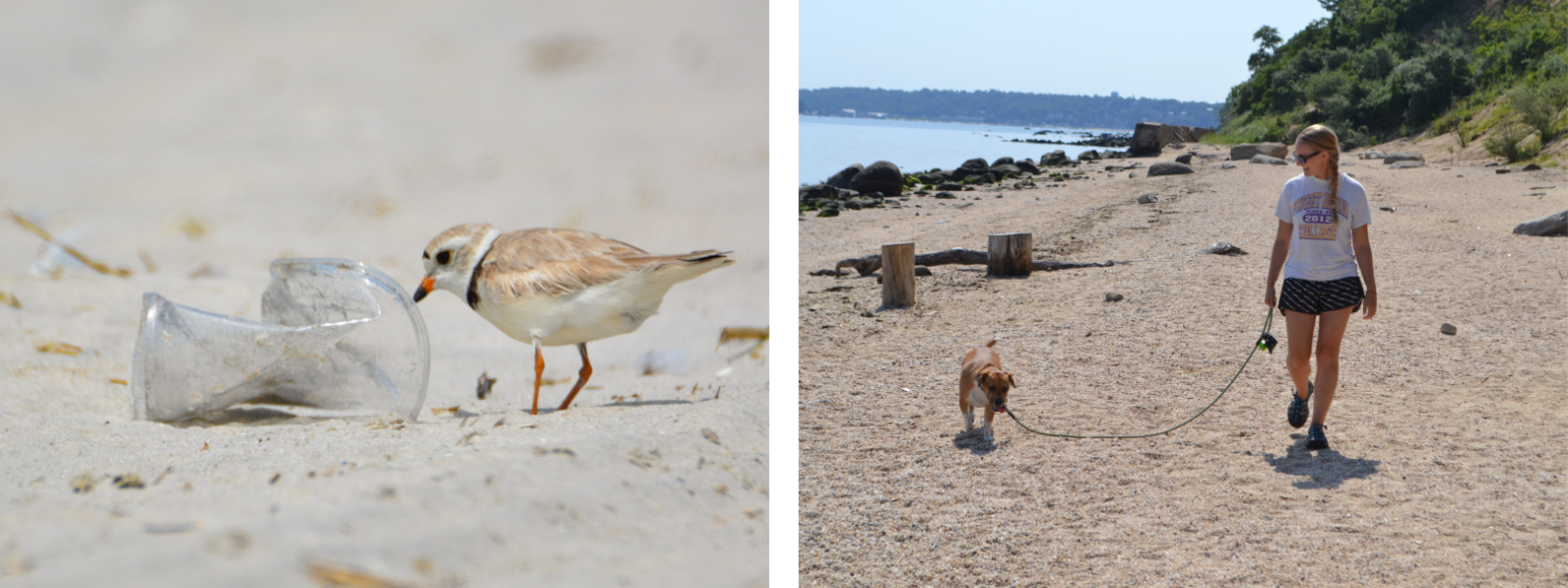
Being a chick is dangerous business! From more natural threats like predators and weather to human-originating threats like unleashed dogs on beaches or pollution, life on the beach isn’t as easy as it may seem. Thankfully, there are many ways we can help keep chicks safe, including:
- Keeping at least 50 meters/164 feet away from shorebird chicks and their parents, including when photographing them.
- Walking around instead of through individuals or flocks foraging of shorebirds.
- Keeping your dogs off the beach from April through September, during nesting season.
- Properly disposing of trash, or taking it with you when you leave the beach.
- Not driving on the beach, especially where prohibited, as chicks can get run over or even trapped in tire tracks—yes, they're that tiny!
- Dismounting and walking your electric or beach bike near nesting areas or where chicks and adults are present.
- Staying out of fenced areas on the beach and reading and following posted signs.
- Taking our Be a Good Egg pledge and sharing with everyone you know how important it is to #SharetheShore!

